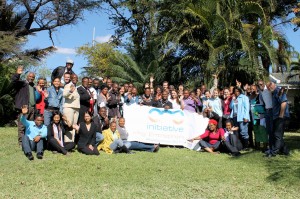“Give a man a fish and you feed him for a day. Teach a man to fish and you feed him for a lifetime.” While the United Nations can provide stability to third world countries and address humanitarian issues, the solutions they offer in terms of relief and aid are not necessarily long term solutions. Resources are tangible and finite; the United Nations can only fund issues only for as long as they can be consumed. For instance, non-profits that donated money to Rwanda following their war were not able to successfully improve the conditions within the country (“Upward Arc”).

Arc Initiative South Africa Conference 2011 (Source: Arc Initiative)
However, the Arc Initiative establishes a different approach to provide “long-lasting economic betterment for local communities”. The organization imparts business knowledge and expertise to young social entrepreneurs to give them the proper decision making tools in maximizing profit and running their business more successfully. By fueling these individuals with the capacity to become leaders, this concept allows for self-sustainability rather than a reliance on external aid.
If the UN lost all its funds, where would they re-establish their resources to function? The answer is that they probably wouldn’t. Contrastingly, social enterprises are self-reliant in attaining the funds necessary to achieve their desired social vision.








